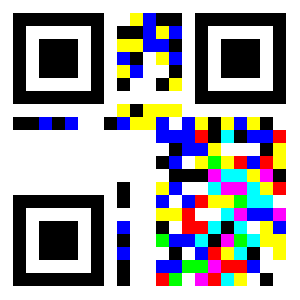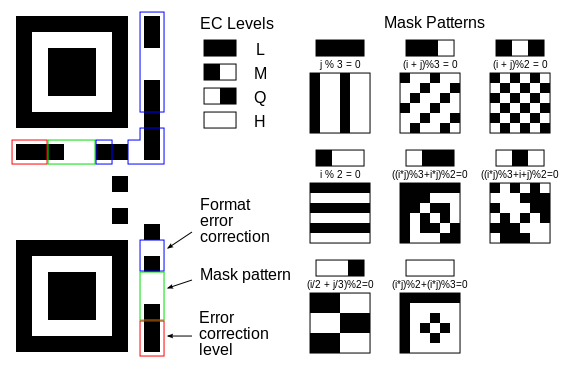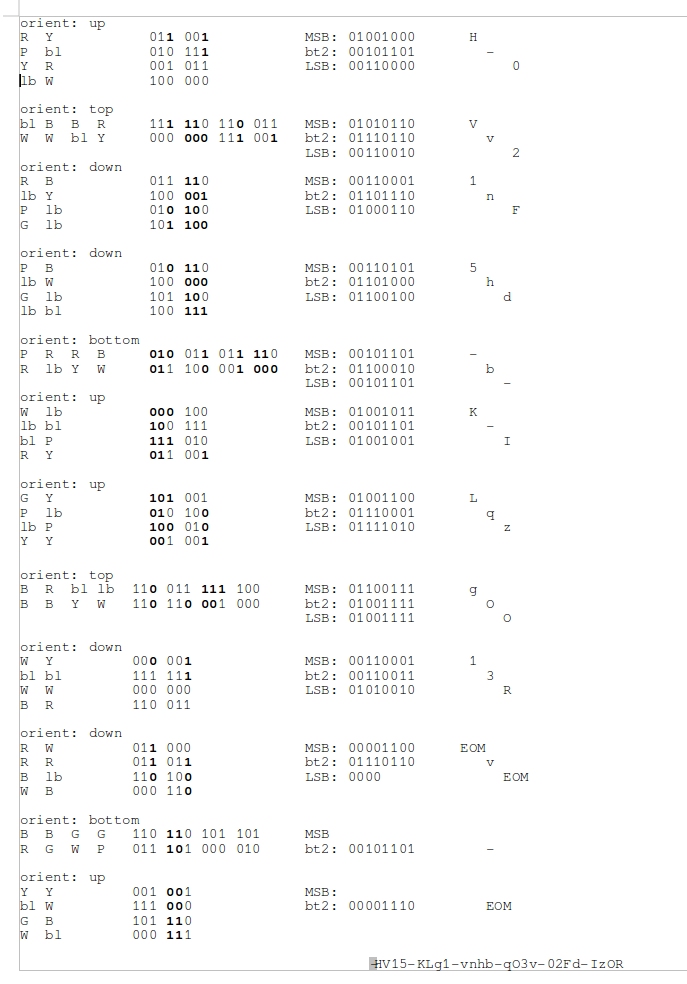Dec 17: Santas Quick Response
Challenge
Enhancement made worse
Santa was disappointed about the small QR’s: they couldn’t store enough data to flag each gift uniquely for his 8 billion customers. Promptly he removed some unnecessary features and added a few trailblazing new ones. Now he’s capable to store a mupltiple of the previous amount, 3 times more, or even more.
Here is your gift:

… extract your nugget with your self made scanner!
Solution
This one nearly broke my brain. We had to delve into the nitty gritty details of the QR format and extend it to RGB.
There is a great video about how to decode a QR code by hand here: https://www.youtube.com/watch?v=KA8hDldvfv0 And the wikipedia entry was extremely useful as well: https://en.wikipedia.org/wiki/QR_code
The video does a much clearer job of explaining the process, but I will run through it here too:
If we assume each cell in the QR code now contains 3 bits, there are basically 3 QR codes interwoven. Since in normal QR codes black=1, white=0, we extend this to the colours using CMY instead of RGB:
1
2
3
4
5
6
7
8
9
RGB
111 black (bl)
110 blue (B)
101 green (G)
100 l.blue (lb)
011 red (R)
010 purple (P)
001 yellow (Y)
000 white (W)
These images explain the QR format:


We see from the right bottom segment that this QR code uses byte encoding, so can produce any ASCII character.
We also see that the mask pattern bits are Blue-Black-Blue. Since we have 3 bits per cell we can have a different masking pattern per channel:
1
2
3
4
5
6
7
masking:
B-bl-B
110 111 110
MSB channel : 111
bit2 channel: 111
LSB channel : 010
So in the most significant bit channel (MSB) and the middle bit channel, the masking pattern is that of 111 (all black), and in the least significant bit channel it is the pattern for 010 (white-black-white).
From the image above we can see that its the following mask patterns, where 1 means invert that bit, and 0 means don’t invert. These mask patterns align to the bottom right corner and repeat in all directions.
1
2
3
4
5
6
111= 100100 010: 101010
100100 000111
100100 100011
100100 010101
100100 111000
100100 011100
Now the next block of eight above the encoding block specify the length, which we just skip, and after that the message starts. The orientation of the blocks determines which cells represent the most through least significant bits The image shown above numbers the cells in a block from most significant (1) to least significant (8), let’s rewrite that to use powers of two:
1
2
3
4
5
orient: up orient: top orient: down orient: bottom
1 2 4 8 16 32 64 128 1 2 64 128
4 8 1 2 64 128 16 32 4 8 16 32
16 32 4 8
64 128 1 2
Now we get to the actual decoding. For each block in the path, we note the color of all cells, transcribe this to three bits per cell, apply the mask pattern, get the eight bits per channel, and convert this to the corresponding ascii char. If we encounter 0000, that signifies end of message.
Below is the manual process I performed to solve this:
NOTE: bold means bit is covered by masking pattern and should be inverted

Reading the letters from most significant bit channel first then repeating the process in the second and third channels and concatenating the text gives us the nugget.
Flag
HV15-KLg1-vnhb-qO3v-02Fd-IzOR 